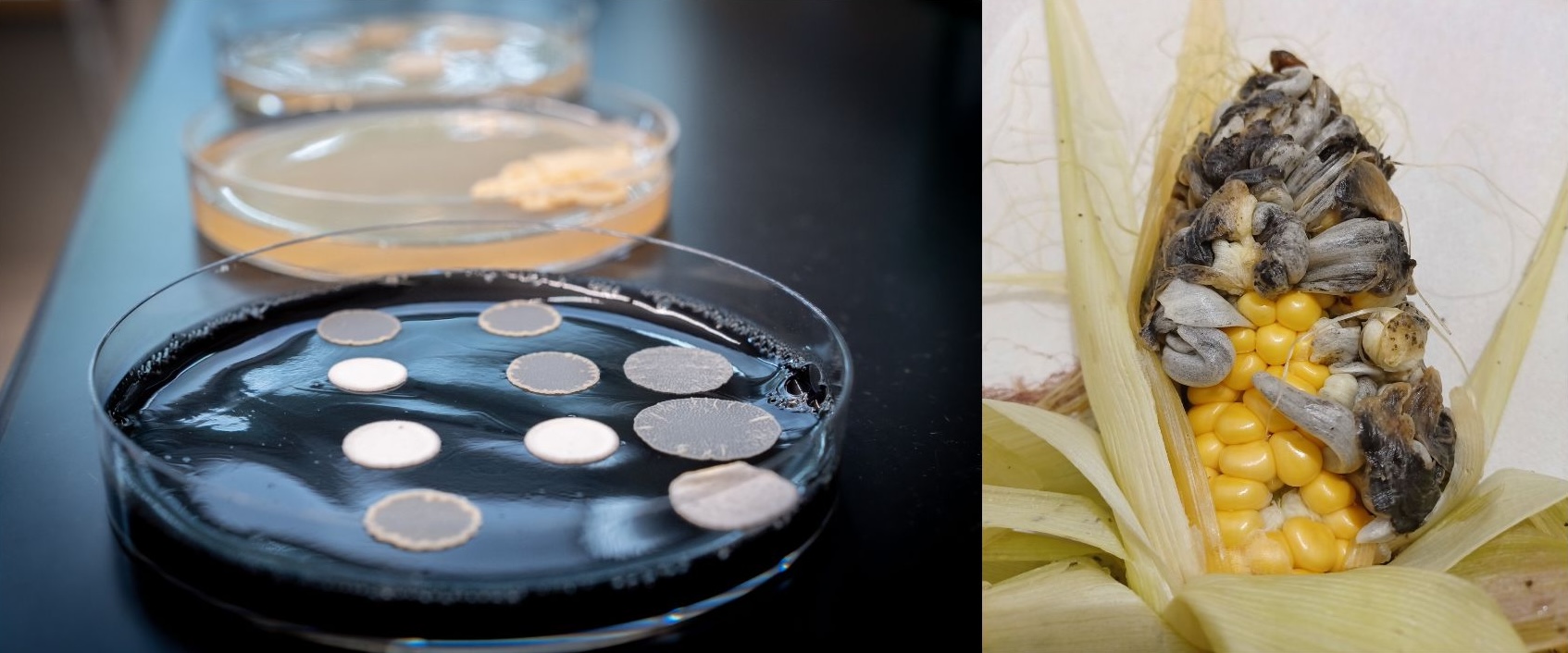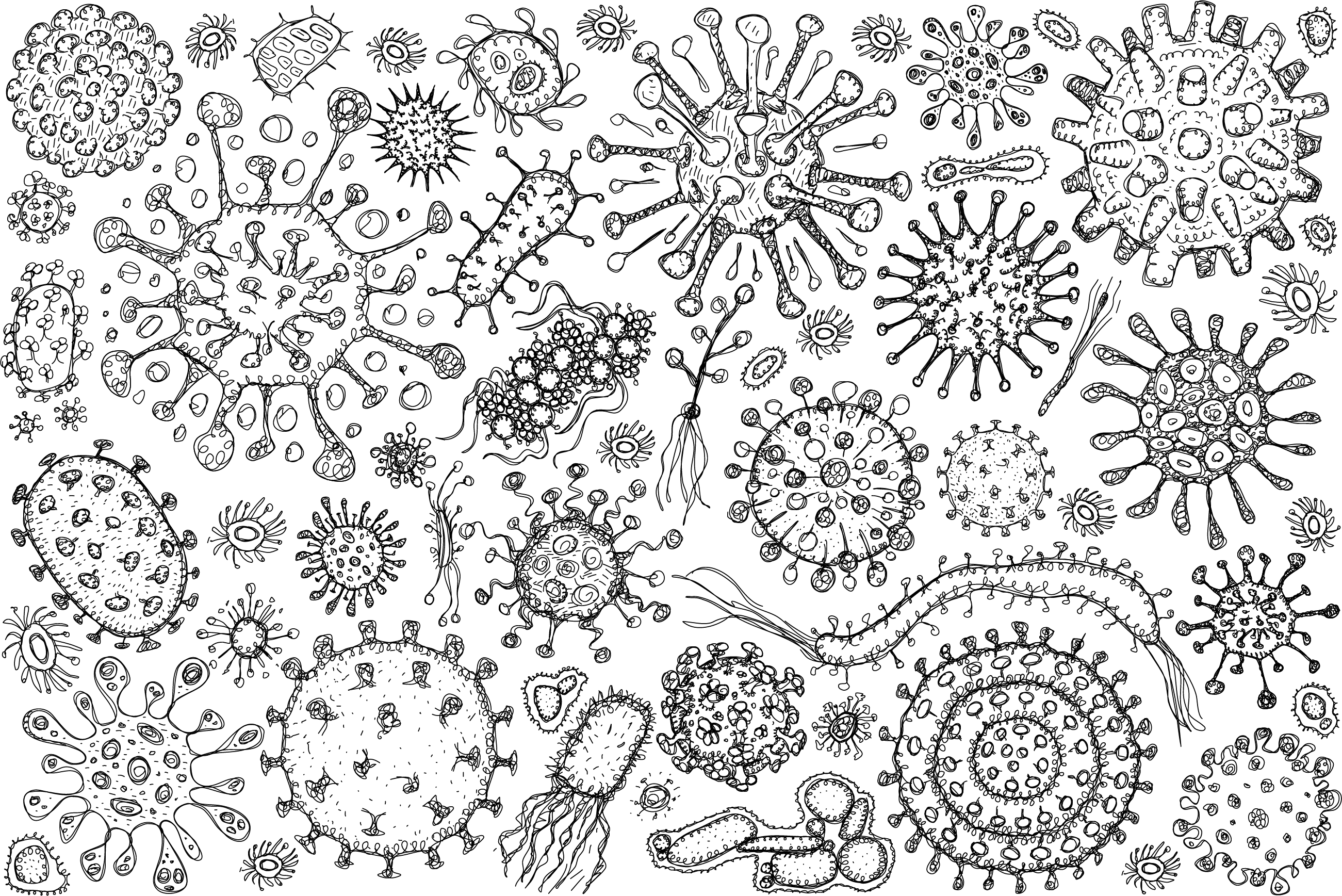
By Sarah Anderson, PhD
Jim Kronstad, a professor at the Department of Microbiology and Immunology, the Michael Smith Laboratories, and the Faculty of Land and Food Systems, recalls working alongside his father, a wheat breeder, during his summers growing up in Oregon. As they worked in the fields, they saw many healthy plants, but also row upon row of plants that had been infected by fungal pathogens. “Fungi have caused disease outbreaks in various crops around the world, and some of these have led to famines,” Kronstad said. “So that was in the back of my mind, that there were these fungal pathogens that had this major agricultural impact.”
Fungi, bacteria, and viruses are to blame for approximately 10 percent of pre-harvest crop losses worldwide, and the spread of these plant pathogens is projected to expand due to climate change. Motivated by having witnessed this devastation firsthand, Kronstad went on to study microbiology and to research mechanisms of plant infection and protection. During a post-doctoral position, he began working with Ustilago maydis, a fungus that infects corn. U. maydis leeches nutrients from the crop to feed the growth of tumor-like masses, causing corn smut disease.
Kronstad has been hooked on investigating U. maydis ever since, not only because it poses a major threat to global corn production, but also because it represents a larger family of plant pathogens that infect similar cereal crops. While many of such pathogens will not grow outside of their plant host, scientists can culture U. maydis as a yeast cell in a petri dish, allowing them to tweak its genetic and molecular toolbox in the lab. They can then transfer the fungus to corn, where it completes the rest of its lifecycle, and observe the effects of their experimentation. “U. maydis is a brilliant model system,” Kronstad said. “You have the best of both worlds because it can be manipulated in the lab, but also depends on the host for part of its lifecycle.”

Djihane Damoo, a graduate student in Kronstad’s lab, has carried on research on U. maydis, having also been introduced to plant diseases in real-life settings. Before coming to UBC, Damoo performed plant disease testing at the Mauritius Sugarcane Industry Research Institute in her home country of Mauritius. “While we worked with several plant pathogens, we also worked on the sugarcane smut, a close relative to U. maydis,” she said. “This work experience really sparked my interest in plant diseases in general.” Aiming to combat U. maydis and a range of crop-damaging pests, Damoo’s research focuses on investigating how the fungus acquires nutrients from and secretes proteins into the corn that drain the health from the plant.
When humans get an infection, one immune response is to starve the pathogen of iron and other nutrients that support its growth and survival. Reflecting on this concept of nutritional immunity, Kronstad’s team wondered how the fungus would fare if it was depleted of heme, an essential iron-based molecule that binds and transports oxygen. Because heme is critical for cellular viability, the fungus wouldn’t grow if the researchers simply deleted the genes involved in making the molecule. Instead, Damoo developed a genetically engineered version of U. maydis in which heme synthesis is turned on or off by adding various carbon or nitrogen sources, allowing her to keep the fungus alive until she was ready to halt heme production and see what happened.
In a 2024 Molecular Plant Pathology study, Damoo exposed corn to her U. maydis mutant and classified the formation of tumors and the development of anthocyanin, a red pigment that indicates a stress response to infection. She observed that, when she turned heme production off, the fungus did not cause corn smut disease. This finding suggests that U. maydis relies on heme synthesis to harm its host and that the pathogen is unable to extract enough of the molecule from the plant to sustain infection.
In considering how this insight might unlock new crop protection methods, the researchers discovered that BroadStar, a commercially available herbicide, works by inhibiting a key enzyme in the heme synthesis pathway. They found that treating U. maydis-infected corn with a diluted dose of BroadStar significantly reduced the fungus’s growth and capacity for destruction.
“The overlap in molecular targets between herbicides and fungicides presents an opportunity to use already commercialized herbicides as fungicides,” Damoo said. “The primary advantage of this approach is that extensive toxicological evaluation has already been conducted on commercial herbicides.” While the researchers applied the herbicide at a concentration that weakened the pathogen without killing the plant, another strategy is to genetically engineer corn so that it is resistant to the active ingredient.

In addition to repurposing an herbicide to inhibit heme synthesis in U. maydis, another potential avenue toward mitigating corn smut disease has emerged from previous research in the Kronstad lab. A 2022 Science study led by research associate Matthias Kretschmer reported that U. maydis intercepts and exploits organic acids and sugars produced during photosynthesis to support disease progression, in part by triggering the expression of effector proteins. The fungus delivers these proteins into the corn to drive tumor development and suppress the host immune response. The researchers hypothesized that many of these effector proteins may target the chloroplast, the plant’s central hub for energy processing, metabolism, and immunity.
To find out, they mashed up the tumors, isolated the chloroplasts, purified the proteins inside and performed proteomic analysis to pinpoint those that had been secreted by U. maydis. They identified at least seven fungus-derived effectors that successfully infiltrated the chloroplast and are now working to understand the functions of those proteins within the plant.
Damoo and Kretschmer honed in on one of these proteins, called putative chloroplast effector 3 or Pce3. When they deleted the gene encoding Pce3 from U. maydis, they observed that it slightly impaired the fungus’s virulence, or ability to cause disease, in corn. To further investigate its role, the researchers expressed the gene in the plant Arabidopsis thaliana, a fast-growing, white-flowered weed that is far more amenable to detailed molecular analysis compared to corn. They found that A. thaliana expressing Pce3 displayed abnormal, curly leaves, providing a clue that the effector protein impacts activity in the chloroplast. Diving deeper, they discovered that Pce3 interacts with DEAD-box RNA helicase, a protein in the chloroplast that regulates the plant response to salt stress.
The team then returned to corn to explore the influence of salt in the U. maydis host. They infected corn with U. maydis lacking the Pce3 gene and grew it in the absence or presence of salt. While the fungus again showed a minor decrease in virulence in the salt-free system, interestingly, it displayed an increase in virulence under salty conditions. “You can change the susceptibility of maize and the impact of the Pce3 effector by stressing the plants with salt,” Kronstad said.
The researchers are still mulling over the significance of these findings and how they might build upon them to fight corn smut disease. “It's tricky because a single effector oftentimes doesn't have a major effect. So, we really want to have an idea about the suite of effectors that might impact the chloroplast,” Kronstad said. By interfering with the function of multiple effectors at once through chemical treatments or gene editing in crops, scientists may be able to disarm the fungus’s rich reserve of proteomic weaponry.
Moving forward, the team plans to pivot their genetic and biomolecular studies from the chloroplast in the host to the counterpart in the pathogen: mitochondria. They aim to understand how the mitochondria in U. maydis process and respond to carbon source inputs and how this triggers the expression of effector proteins, which may reveal additional targets for fungal control solutions.
Ultimately, the researchers envision impact for their work ranging from fundamental scientific discovery to securing sustenance for generations to come. “I hope this work demonstrates how plant pathogens have evolved sophisticated mechanisms to subvert their hosts. Plant pathogens are often underestimated, as the focus tends to be primarily on human pathogens, while the impact and complexity of plant pathogens receive less attention,” Damoo said.
“There's always this blue-sky hope that our findings will improve crop production and food security,” Kronstad said. “It goes back to what my father was doing with wheat breading — trying to increase food production, protect crops, and develop a food security outlook.”

